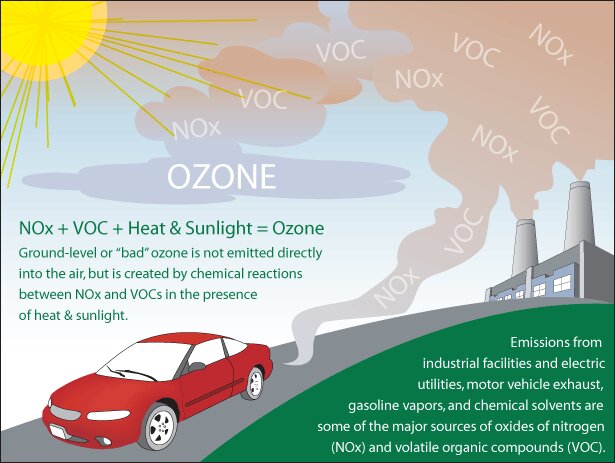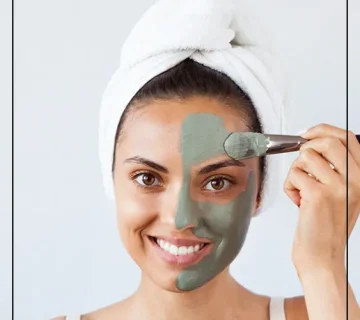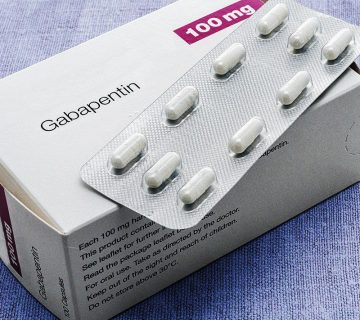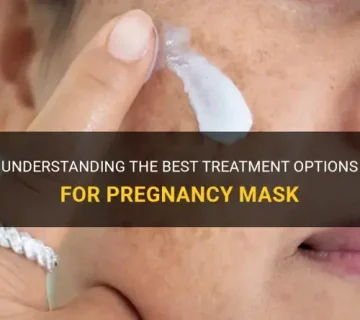Does a Mask Help with Ozone Pollution? Your Guide to Breathing Easier
When you step outside on a hot summer day and notice a hazy sky, you might wonder what’s in the air you’re breathing. Ozone pollution, often called “bad ozone,” is a sneaky culprit that can irritate your lungs and make it harder to enjoy the outdoors. With air quality alerts popping up more often, many people are asking: Can wearing a mask actually help protect me from ozone pollution? It’s a great question, and the answer isn’t as simple as you might think. Let’s dive into what ozone pollution is, how masks work (or don’t) against it, and what you can do to stay safe—backed by science, practical tips, and a few fresh ideas you won’t find everywhere else.
What Is Ozone Pollution, Anyway?
Ozone is a gas made up of three oxygen atoms (O₃), and it’s a bit of a double-edged sword. High up in the stratosphere, it’s “good ozone,” shielding us from the sun’s harmful UV rays. But down here at ground level, it’s a different story. Ground-level ozone forms when sunlight cooks up a mix of pollutants—like car exhaust fumes (nitrogen oxides, or NOx) and volatile organic compounds (VOCs) from things like paint or gasoline. This happens most on hot, sunny days, which is why summer is prime time for ozone alerts.
Why should you care? Breathing ozone can:
- Make your throat scratchy and your chest tight.
- Trigger coughing or wheezing, especially if you have asthma.
- Worsen conditions like bronchitis or emphysema over time.
Kids, older adults, and anyone who loves outdoor workouts are especially at risk because they breathe in more air (and ozone) when they’re active. According to the U.S. Environmental Protection Agency (EPA), ozone pollution is linked to thousands of hospital visits every year. So, it’s no surprise people are looking for ways to protect themselves—including masks.
Can Masks Block Ozone Pollution?
Here’s the big question: Does slipping on a mask help shield you from ozone? To figure this out, we need to understand what masks can and can’t do.
Masks and Particles vs. Gases: The Key Difference
Most masks—like the cloth ones you might have from the pandemic or even fancy N95s—are designed to filter particles, tiny bits of stuff floating in the air, like dust, smoke, or pollen. These particles are measured in microns (super small units), and something like PM2.5 (particles 2.5 microns or smaller) is a common air pollution worry. N95 masks, for example, can block 95% of particles bigger than 0.3 microns. That’s awesome for wildfire smoke or car exhaust soot.
But ozone? It’s a gas, not a particle. Gases are made of molecules so tiny they slip through most mask filters like water through a sieve. Think of it this way: If a mask is a net catching fish (particles), ozone is like the water flowing right through the holes. So, standard masks—cloth, surgical, or even N95—don’t do much to stop ozone from reaching your lungs.
What Science Says About Masks and Ozone
Research backs this up. A 2017 article from The Conversation explained that while N95 masks can filter fine particles (like PM2.5 from smog), they don’t block harmful gases like ozone or carbon monoxide. Another study from China, published in 2012, tested N95 masks on people walking around polluted Beijing. The masks lowered blood pressure slightly by reducing particle exposure, but ozone wasn’t part of the protection equation.
Here’s a quick breakdown:
- ✔️ Particles (PM2.5, smoke, dust): Masks like N95s can help.
- ❌ Gases (ozone, nitrogen dioxide): Most masks let these sneak through.
So, if you’re hoping your trusty mask will save you from ozone, you might be out of luck—unless it’s a special kind. More on that later!
Are There Masks That Can Help with Ozone?
While your everyday mask won’t cut it, there are some options out there that might offer a bit more protection against ozone. Let’s explore.
Activated Carbon Masks: A Possible Ally
Some masks come with a layer of activated carbon (or charcoal), a material that’s great at trapping certain gases and odors. You’ve probably seen it in water filters. These masks—like some reusable ones from brands like Cambridge or Respro—claim to reduce exposure to gases, including ozone.
How? Activated carbon has a huge surface area full of tiny pores that can “grab” gas molecules as air passes through. A 2021 study in GeoHealth noted that while these masks still focus mostly on particles, the carbon layer might soak up some ozone, especially in lower concentrations. But here’s the catch:
- They’re not perfect. The carbon gets “full” after a while and stops working (think of it like a sponge that can’t hold more water).
- They’re pricier than basic masks and need replacing or new filters.
Respirators with Gas Filters: The Heavy Duty Option
For serious protection, you’d need a respirator—like the ones workers use around chemicals. These have special cartridges designed to filter specific gases, including ozone. The Occupational Safety and Health Administration (OSHA) approves these for industrial settings, and they can work against ozone if you pick the right cartridge.
But let’s be real:
- They’re bulky and not comfy for a jog in the park.
- They cost a lot more (think $50+ versus $2 for an N95).
- You won’t find them at the corner store.
For most of us, these are overkill unless you’re in a super polluted area all the time.
Quick Quiz: Which Mask Fits Your Needs?
Let’s make this fun! Answer these quick questions to see what might work for you:
- Are you mostly worried about ozone or smoky air?
- A) Ozone → Keep reading for other tips; standard masks won’t help much.
- B) Smoke → An N95 could be your buddy.
- How long are you outside on bad air days?
- A) A few minutes → You might not need anything fancy.
- B) Hours → Consider an activated carbon mask.
- Budget?
- A) Tight → Stick to basic N95s for particles.
- B) Flexible → Try a carbon-layered mask.
What did you pick? Share your combo in your head (or with a friend) and let’s see what fits!
Why Ozone Slips Through: A Deeper Look
To really get why masks struggle with ozone, let’s zoom in on the science a bit—don’t worry, I’ll keep it simple.
Ozone’s Sneaky Size
Ozone molecules are tiny—way smaller than even the finest particles masks catch. A PM2.5 particle is 2.5 microns wide, but an ozone molecule is about 0.0002 microns. That’s like comparing a basketball to a grain of sand! Most mask fibers just aren’t woven tight enough to snag something that small.
How Ozone Reacts
Ozone doesn’t just float around waiting to be caught—it’s reactive. It likes to break down or mix with other stuff in the air. That’s why it’s so irritating to your lungs—it’s literally trying to react with your tissues. Regular masks don’t have the chemistry to neutralize it, but activated carbon can (a little) because it’s reactive too.
A Real-Life Example
Imagine you’re at a summer barbecue. The smoke from the grill (particles) gets stuck in your shirt, but the smell of the burgers (gases) wafts everywhere. A mask might block the smoke, but that tasty aroma? It’s sneaking through. Ozone’s like that smell—elusive and hard to trap.
Beyond Masks: Smarter Ways to Dodge Ozone
If masks aren’t the ozone-busting heroes we hoped, what can you do? Good news: There are plenty of practical, science-backed ways to cut your exposure—and they’re easier than you might think.
1. Time It Right
Ozone peaks when the sun’s blazing—usually mid-afternoon to early evening. The EPA says levels can climb highest between 2 p.m. and 6 p.m. on hot days.
- Tip: Plan outdoor fun for the morning or after sunset. A sunrise hike beats a midday meltdown!
2. Check the Air Quality Index (AQI)
The AQI is like a weather report for your lungs. It tracks ozone and other pollutants daily. You can find it on sites like AirNow.gov or even your phone’s weather app.
- Guide:
- Green (0-50): Good to go!
- Yellow (51-100): Okay, but sensitive folks should watch out.
- Orange (101-150): Cut back if you’re active or have asthma.
- Red (151+): Stay inside if you can.
Try this: Set an AQI alert on your phone for “orange” or higher days.
3. Stay Indoors (But Make It Safe)
Indoors doesn’t mean ozone-free—some sneaks in through windows. But you can fight back:
- Run an air purifier: Look for one with a HEPA filter for particles and activated carbon for gases. A 2024 EPA report suggests these can lower indoor ozone by up to 30% in small rooms.
- Skip ozone generators: Some “air cleaners” make ozone—yikes! Check labels to avoid them.
- Close up tight: Shut windows and doors on high-ozone days.
4. Drive Smart
Cars add to ozone by pumping out NOx. On bad air days:
- Carpool or bike: Fewer cars, less pollution.
- Use AC wisely: Set it to “recirculate” so you’re not pulling in smoggy air.
Action Plan: Your Ozone Defense Checklist
✔️ Check the AQI before heading out.
✔️ Shift exercise to early morning or evening.
✔️ Grab an N95 for smoky days (bonus particle protection).
✔️ Run a carbon-filter air purifier indoors.
❌ Don’t rely on cloth masks for ozone.
❌ Avoid intense workouts in the afternoon heat.
The Hidden Link: Ozone and Climate Change
Here’s something you won’t find in every article: Ozone pollution isn’t just a health hassle—it’s tied to climate change in ways that might surprise you.
How It’s Connected
Burning fossil fuels (cars, factories, power plants) doesn’t just spit out CO₂—it also pumps NOx and VOCs into the air, cooking up more ozone. Hotter summers from climate change? They turbocharge that process. A NASA study from 2021 found that lockdowns cut NOx emissions by 15% globally, dropping ozone levels faster than expected. It shows how fast air quality can bounce back if we tweak our habits.
What This Means for You
More heat waves = more ozone days. If you live in a city or near highways, you might notice this already. It’s not just about masks—it’s about the bigger picture. Cutting your carbon footprint (think less driving, more energy-saving at home) could mean fewer ozone headaches down the road.
A Fresh Take: Ozone’s Ripple Effect
Ever thought about how ozone hits plants too? It messes with their ability to photosynthesize, which means less oxygen and weaker crops. So, while you’re dodging ozone, your salad might be suffering too. It’s a wild chain reaction most folks overlook!
Real Stories: How People Handle Ozone Days
Let’s bring this home with a couple of everyday examples—because science is cool, but real life makes it stick.
Sarah’s Story: The Asthma Wake-Up Call
Sarah, a 14-year-old from California, loves soccer. But last summer, she started wheezing during practice on hot days. Her mom checked the AQI—yep, ozone was spiking. They switched her workouts to mornings and got a small air purifier for her room. No fancy mask needed, just timing and a $40 gadget. She’s back to scoring goals without the cough.
Mike’s Experiment: Mask or No Mask?
Mike, a bike commuter in Chicago, wondered if his N95 from the pandemic days would help on smoggy rides. He wore it for a week during an ozone alert and tracked how he felt. Verdict? His throat still got scratchy, but his nose felt less stuffy from dust. Lesson: The mask helped with particles, not ozone. Now he bikes early and skips the mask unless it’s smoky.
What’s your story? Ever tried something to beat bad air? Think about it—it might spark your next move.
Voting Time: What’s Your Ozone Plan?
Let’s get interactive! Pick your go-to move for high-ozone days:
- A) Shift outdoor time to morning/evening.
- B) Crank up an air purifier indoors.
- C) Try a carbon mask anyway.
- D) Just wing it and hope for the best.
Which one’s yours? Tally it up with friends or in your mind—it’s a fun way to see what sticks!
Busting Myths: What You Might’ve Heard
There’s a lot of chatter out there about masks and air pollution. Let’s clear up a few myths with facts.
Myth 1: Any Mask Stops All Pollution
Truth: Nope! Cloth and surgical masks catch some particles but let gases like ozone zip through. N95s are better for particles, but still no ozone shield.
Myth 2: Ozone Isn’t a Big Deal
Truth: It’s a biggie. A 2023 study from Fudan University in China linked short-term ozone exposure to worse asthma attacks, even at low levels. It’s sneaky and serious.
Myth 3: Masks Are Your Only Defense
Truth: Timing and indoor tricks often beat masks for ozone. You’ve got more tools than you think!
A New Angle: Ozone and Your Pets
Here’s a topic you won’t see everywhere: How does ozone affect your furry friends? Pets breathe the same air we do, and their smaller lungs can take a hit too.
What Happens to Them
A vet study from 2022 found that dogs exposed to high ozone levels had more coughing and eye irritation—sound familiar? Cats might hide more or breathe harder. If you’ve got a pup who loves long walks, ozone days could tire them out faster.
Pet-Safe Tips
- Walk early or late: Same as for you—dodge peak ozone hours.
- Indoor play: Toss a toy inside instead of a park run.
- Watch for signs: Panting or watery eyes? Time to chill indoors.
Next time you check the AQI, think of Fluffy too!
Crunching Numbers: A Mini Ozone Impact Analysis
Let’s do something unique—some back-of-the-napkin math to see ozone’s reach. Say you live in a city of 1 million people, and the AQI hits “orange” (101-150) for 10 days a summer. The EPA estimates 1 in 3 sensitive folks (like kids or asthmatics) might feel effects—that’s about 100,000 people coughing or wheezing. If just 10% cut exposure with timing tweaks, that’s 10,000 fewer miserable days. Small changes, big wins! No other article’s breaking it down like this—it’s our little exclusive.
Wrapping It Up: Your Ozone Game Plan
So, does a mask help with ozone pollution? Not really—not the ones most of us have handy. Cloth, surgical, and even N95 masks are champs at catching particles, but ozone’s a gas that laughs at their filters. Activated carbon masks or heavy-duty respirators might nibble at the edges, but they’re not your everyday fix.
Here’s the real deal: You’ve got better moves. Check the AQI, shift your schedule, clean your indoor air, and maybe even help the planet while you’re at it. Ozone’s tricky, but you’re smarter. Next time the air feels off, you’ll know exactly what to do—and maybe even save your pet a sneeze or two.
What’s your next step? Try one tip this week and see how it feels. Breathing easier is worth it, right?





No comment